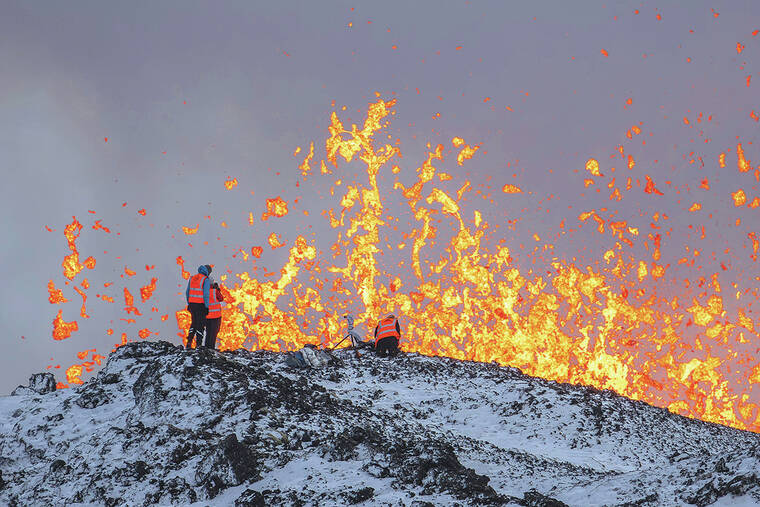What we know so far about the volcanic eruption in Iceland
LONDON — Scientists anticipated the eruption of a volcano in southwestern Iceland for weeks, so when it happened on Monday night, it was no surprise. The region had been active for more than two years and thousands of small earthquakes rattled the area in recent weeks.
Here is a look at what happened and what may be ahead:
How the eruption unfolded
It started at about 10:20 p.m. local time on Monday north of Grindavik, a fishing town of 3,400 people on the Reykjanes Peninsula. The town is about 50 kilometers (30 miles) southwest of Iceland’s capital, Reykjavik, in an area known broadly as Fagradalsfjall volcano.
First there was a series of small earthquakes. Then lava that’s around 1,200 C (nearly 2,200 F) began pouring out of a fissure about four kilometers (2½ miles) long.
The Icelandic Meteorological Office estimated that hundreds of cubic meters of lava per second flowed out in the first two hours of the eruption, though the activity had significantly subsided by Tuesday afternoon.
Was it unexpected?
In short, no — scientists had expected the eruption for several weeks and in November, authorities evacuated Grindavik after thousands of small earthquakes shook the area for more than two weeks.
Scientists said their monitors showed that a corridor of magma, or semi-molten rock, was spreading toward the town and could reach the surface imminently.
The nearby Blue Lagoon geothermal resort, one of Iceland’s best-known tourist attractions, had to close temporarily as a precaution after a magnitude 4.8 earthquake hit the area last month.
Will this eruption affect flights?
None of the recent eruptions on the Reykjanes Peninsula caused damage or disruptions to flights, despite the area’s proximity to the country’s main Keflavik Airport.
And though Monday’s eruption was larger and more powerful than those in recent years, forecasters and scientists say it’s unlikely to impact air travel.
Many still recall the huge disruptions to international aviation in 2010, when a different Icelandic volcano, the Eyjafjallajokull, spewed giant clouds of ash high into the atmosphere over Europe. About 100,000 flights were grounded, millions of international travelers stranded and air travel was halted for days, because of concerns the fine ash could damage jet engines.
Experts say the location and features of this eruption mean that it isn’t expected to produce much ash or cause a similar scale of disruption.


